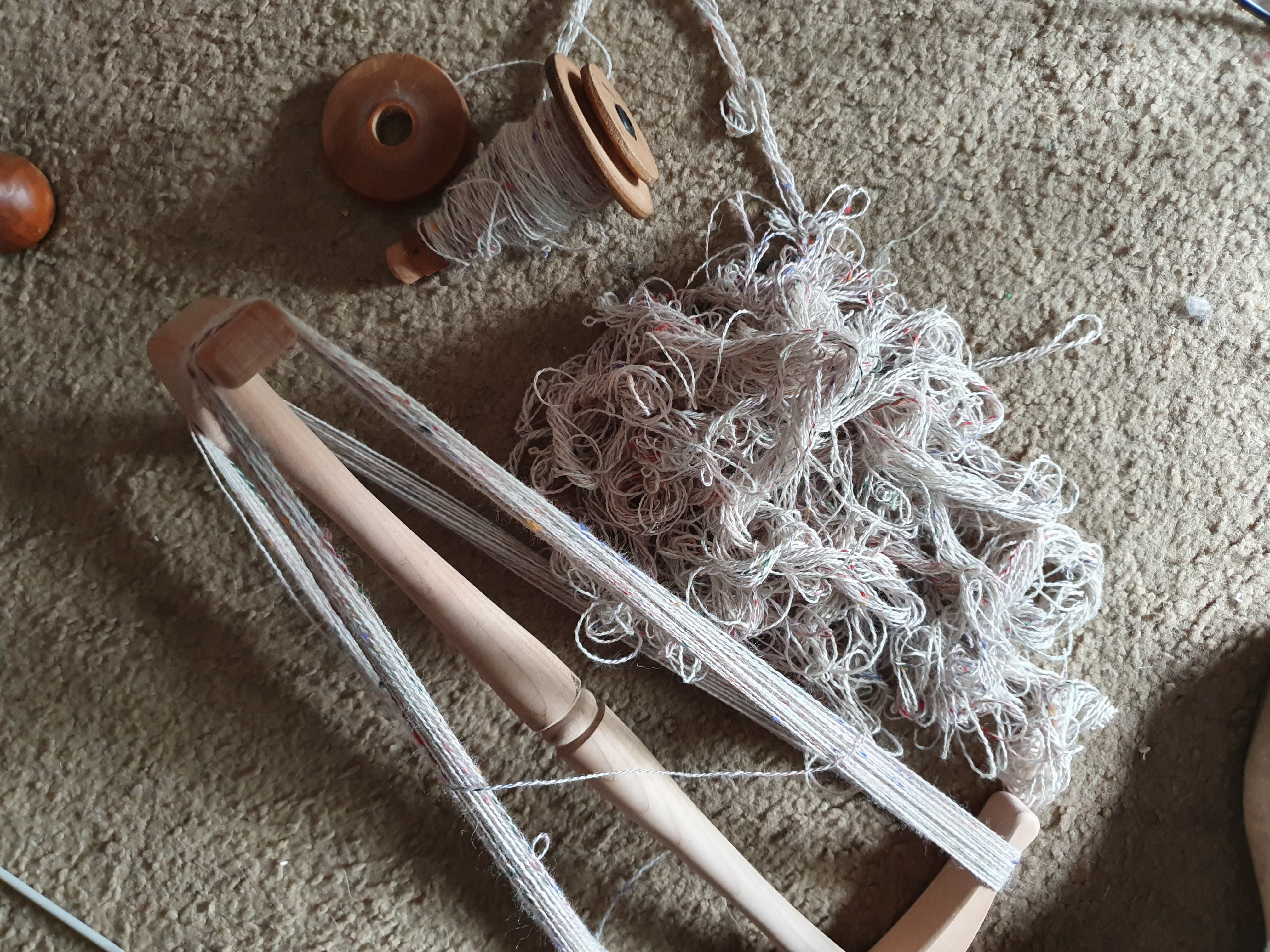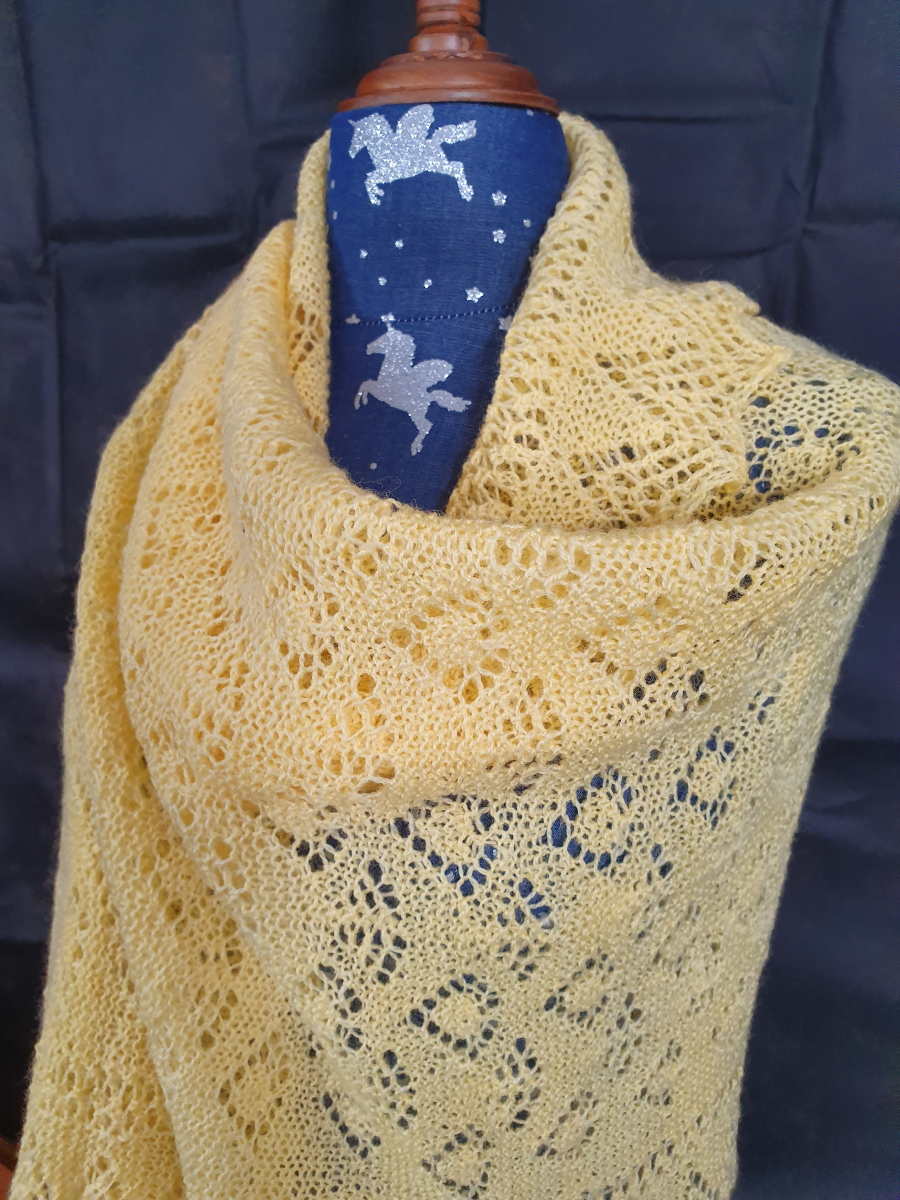
Spinning Disasters...

Quick Links
- Archived - Ask a Knitting Question
- Basic Knitting Stitches
- Beginner Knitting Patterns
- Knitting Abbreviations
- Needle Sizes Chart
- Tension Squares
- Yarn Comparison Chart
FYI: This site receives a small amount in commissions from affiliate links and third-party advertising.
Spinning disasters happen to the best of us. No matter how long you have been spinning your own wool and how much experience you have, sometime life just happens...
Spinning Disasters: #1 - Bobbin Fail...
© Knitting Naturally | My Latest Spinning Disaster
The bobbin I was using is very old, around thirty years old and the glue that held the end on the centre rod has given up the ghost. The problems started when I was plying two singles, and for the life of me I could not work out what was wrong. It did not become clear until the end came off completely when I was winding the yarn onto my niddy noddy.
Two seconds of watching the TV and I failed to notice in time. The top popped off and so did quite a bit of yarn that was no longer being held on the bobbin. In a matter of seconds, my lovely new yarn became so tangled that it would have taken far more patience than I possess to untangle it all.
Moral of the story - check your equipment before you start each stage. If any of your bobbins or the wheel look wobbly do the required maintenance and swap out any damaged or broken bobbins with new ones. That way you can avoid the heartache of abandoning a tangled mess after spending hour upon hour spinning.
Yarn breaking when plying...
Another issue I have had recently was with a finely spun merino yarn. The singles were quite fine with quite a bit of spin to them. This is not usually a problem once the singles are plied together as the two singles are partially untwisted during the plying process (spun one way and plied the other) and if done properly the plied wool is both fine and soft.
However getting the tension right to get a nice yarn with minimal twist when you are finished can be tricky. Singles with a lot of spin can often fold and twist together as it comes off the bobbin and this can cause tight hard twists coming off the yarn if you don't catch them before the plied yarn feed onto your working bobbin.
What I normally do is to feed the two singles through the fingers of my right hand to add a bit of tension and treadle fairly slowly so that I can stop easily to pull the 'double ups' out before they feed through the orifice of the wheel. This usually works relatively well but sometimes, particularly with fine singles, pulling the 'double ups' out will break the yarn.
Talk about frustration! When this happens it is usually a good idea to leave the singles on the bobbins for 24 hours before plying so that the yarn 'sets' a bit. The break may also give you time to calm down...
For next time it might be a good idea to play with your tension to reduce the twist on you singles a bit so that it is less likely to twist on itself during plying. It is all about balance. You need enough twist for the single to stay together while plying (so that it doesn't unravel and pull apart) but you also want the twist to be as gentle as possible so that the yarn you produce is nice and soft.
Too Much Twist - Z or S?
The Z or S refers to the direction of the twist in your single or your yarn. If you spin with the wheel going clockwise you will produce singles with a Z twist and you would ply your two (or more singles) with the wheel going counter-clockwise creating an S twist. The twist created during plying not only holds the two singles together but it effectively cancels out some of the Z twist in the singles.
Couldn't Find What You Were Looking for?
Try searching the site using the search box below:


Recent Articles
-
Shetland Knitting and Shetland Knitters
Feb 07, 21 07:44 AM
Shetland knitting and the women in the Shetland Isle who create Shetland lace are among the best knitters in the world. -
Fixing Knitting Mistakes
Jan 28, 21 02:35 AM
When you are learning how to knit, you are going to make a few mistakes. It might not make you happy but fixing knitting mistakes is par for the course. -
Shetland Lace Knitting
Dec 11, 19 07:03 PM
Shetland Lace Knitting is a particular style of knitting that developed in the Shetland Islands and was one of the main exports of the Island early in the last century.
 >
>






